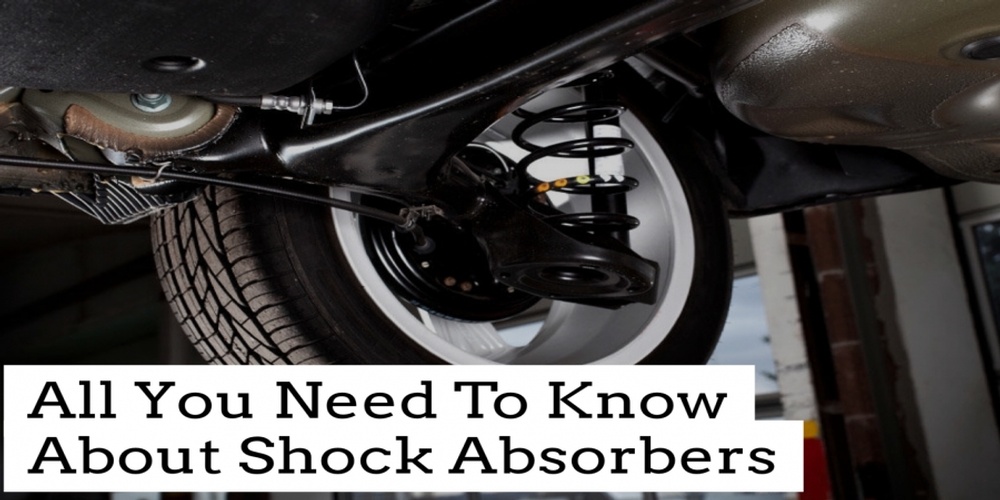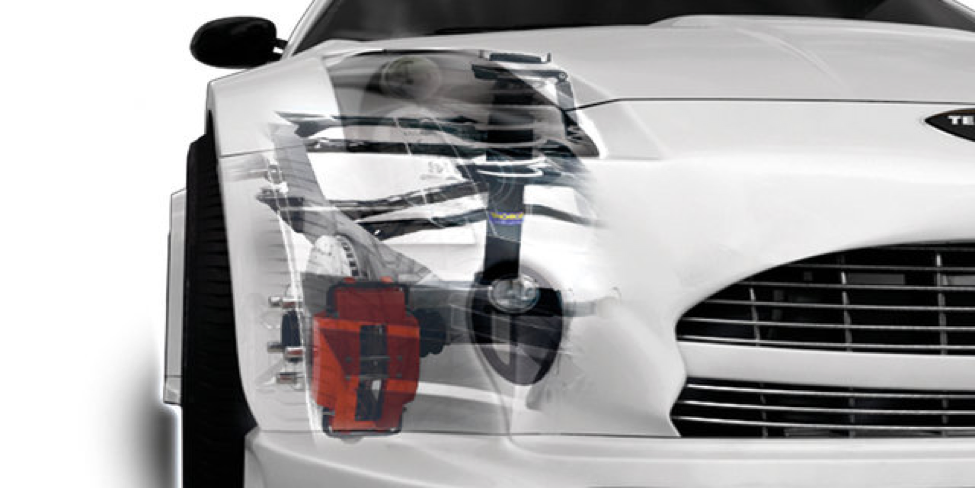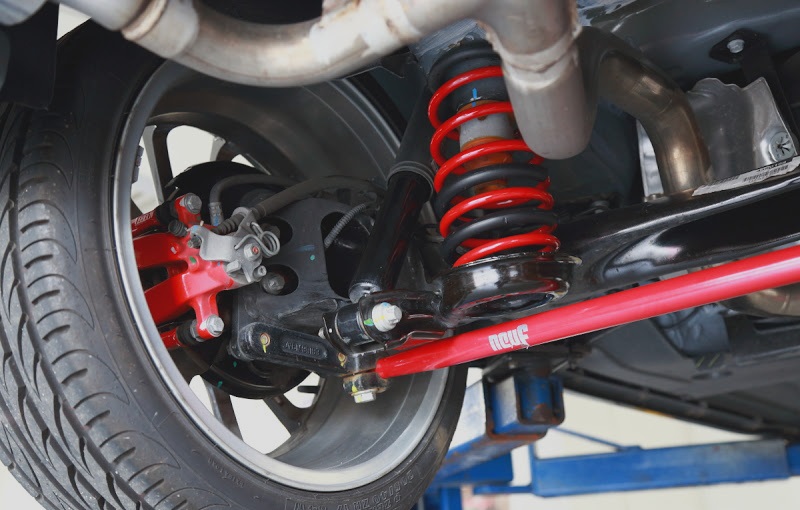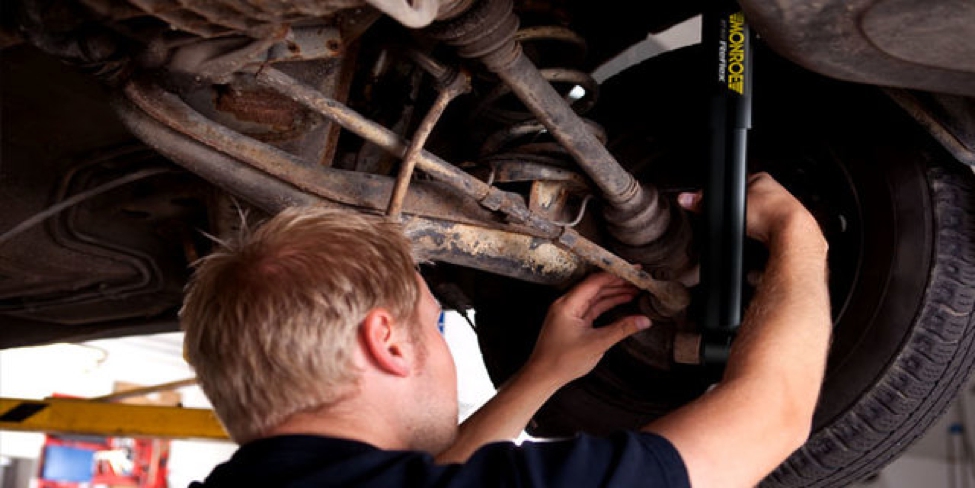
The modern vehicle is truly a thing of wonder. With so many moving parts and synchronizing motions, it is incredible to watch and hear it all lead to forward motion. The way a car operates is one thing we sometimes take for granted because it all easily looks so mundane and expected. But, a set of components known as the shock absorbers operate in a less predictive way due to the nature of their functionality.
The shock absorbers are a very essential part of the vehicle and arguably take the most beating over time when it comes to wear and tear. They are always working constantly with the entire suspension system in the vehicle and paying attention to them throughout the driving life of your vehicle is a wise decision.
We want to help you better understand what a shock absorber is and does. Read on to examine more in-depth coverage of this complex vehicle component…
What are they?

Simply put, they are components in the vehicle’s suspension which dampen and restrict the upward and downward movement of the springs in the suspension. Kinetic energy is a big factor here because, the goal is to convert excessive motion from the upwards and downwards movements (kinetic energy) into other forms of energy (in this case heat energy).
Shock absorbers achieve the damping effect through the help of hydraulic fluid contained in the housing itself. The fluid works by providing the required natural resistance and drag causing the absorbers to move intentionally more “fluid” than the springs located on top of them. The effect is, a controlled sequence of movements that results in controlling the vehicle’s ride quality to a level where it is comfortable for both driver and passengers.
The shock absorber is always working with the strut, another suspension component which includes its own separate shock, spring and a sturdy frame designed to hold up the vehicle’s weight.
Where are they located?

Every corner of your vehicle has a shock absorber, and this would make sense because every wheel on the vehicle will be experiencing movements simultaneously. In most cases, these movements will be different for each wheel.
The shock absorbers work as a single unit in a multi-unit system known as the vehicle’s suspension. The absorbers have a slim cylindrical shape that is linked to both axles in the vehicle. Then, the springs surround each of them and finally the wheel is connected to it all through the wheel hub.
Types of shock absorbers?

All shock absorbers have a main function: to correctly control the vertical movement of a vehicle over road surfaces. Because every manufacturer has different requirements for building their vehicles, there are different ways in which a shock absorber can operate.
Conventional telescopic shock absorbers have a simple structure and can be found on both front and rear suspension systems. The general rule of thumb with these is to replace them when worn rather than repair them.
Strut type shock absorbers replace part of the suspension system and must be built more ruggedly to deal with greater road forces. Used mostly in medium sized passenger vehicles, this absorber type can either be sealed or be repairable. Sealed units are usually found in the suspension systems in luxury cars while the repairable units dubbed as McPherson struts have replaceable strut cartridges.
Spring seat shocks combine qualities of both telescopic and strut type shock absorbers. A spring seat shock is a suspension unit and damping device in a single system. Unlike struts, these are not designed to be subjected to high side loads or weights. In addition, these shock absorbers are also fully sealed and have no option for repair.
Effects if they don’t work?

Because shock absorbers constantly work with the springs and struts in the suspension system, they fail when they are unable to receive road shocks and convert that energy to heat or let it be redistributed. Symptoms when the shock absorbers fail fall into three categories; visual cues, sounds and vehicle ride quality. A vehicle which sits a little lower than its normal ride height may signify an issue with the absorbers. Also, a lot of clunking sounds and bangs can be heard when the vehicle is riding over bumps and undulations on the road.
Depending on the suspension setting fitted to the vehicle in question, an uncharacteristically rougher and busier ride quality will be a consequence of the shock absorbers not working properly with the suspension to properly control ride quality.
The thing to consider when it comes to shock absorbers are the nature of wear and tear is not always so obvious. Deterioration usually occurs internally and can take some time to manifest outwardly.
There are other components on the vehicle which can help indicate some form of shock absorber wear. The tires are a good place to start. Tires exhibiting signs of feathering are a reliable indicator of significant shock absorber wear. Feathering is the evenly spaced areas of concentrated wear on the thread, which occur because the tire is more likely to hop up and down – literally bouncing off the surface of the road after a bump instead of remaining flat against the road.
A common method to quickly spot shock absorber wear is to push down on each corner of the vehicle when it is parked. Properly functioning shocks will cause the vehicle to bounce back up initially, then stop shortly thereafter. With worn shocks, the vehicle will continue bouncing for a bit longer.
How do you maintain them?

The shock absorbers in your vehicle are constantly working to redistribute road shocks properly in order to provide ride comfort that is free from harshness. But do you know there is a major factor that could make their behavior unpredictable? That would be the number of passengers you load your vehicle with. Every vehicle has a sticker located on the inside of the door sill; it lists the maximum allowable limit for passenger capacity. Common sense would be to not exceed that limit and if you must, make it a rare occurrence.
Other ways to help extend the life of your shock absorbers are well within reach. Drive reasonably over bumps, do not go over speed bumps at high speeds and always check your tire pressure levels.
Typically, most shock absorber manufacturers recommend replacing shock absorbers at the 80,000 – 100,000 km mark. Even more importantly, replacement of shock absorbers must be done in pairs (front shock absorbers at the same time and rear shock absorbers at the same time) to avoid erratic handling issues.
Tips 4 Keeps
Dependent on the exact type of vehicle and driving conditions, the shock absorber’s lifespan will directly reflect that, it will not be unusual for some shock absorbers to reach worn-out status long before their factory recommended replacement or repair date. Don’t replace shocks to correct vehicle sag, that’s a job for the springs. It is important to have a professional perform any needed repairs.
Also keep in mind that, not all manufacturers build their suspension systems to the same standards and some manufacturers might choose a simpler and more fragile setup to suit the manufacturer’s overall intention for the vehicle in question. Other manufacturers might choose a more complicated and robust setup to suit the vehicle’s performance and handling goals.

